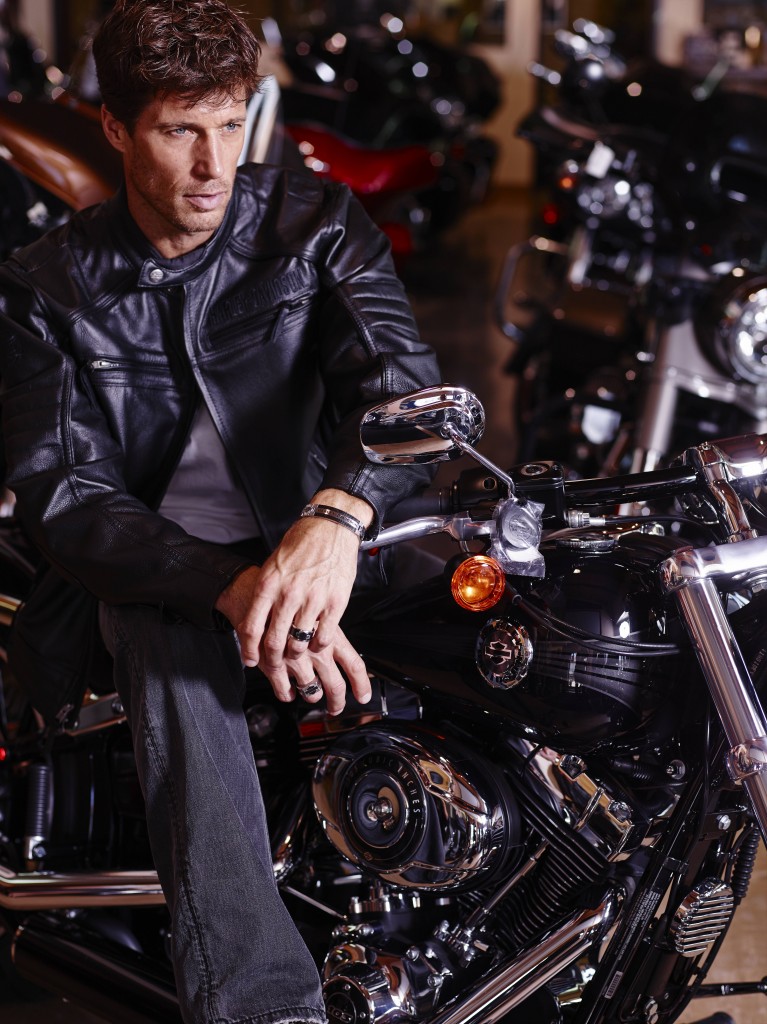BUILDING A BETTER PORTFOLIO Step Three: Crafting Images that Sell You

As a photographer, your ultimate goal is to sell your images. But before you can do that, your images have to sell you. They are the face your business presents to the world, the emblems of your brand, which need to convince potential clients that you have the skills and vision they seek. With so much at stake, what sort of images should you choose to represent you?
I have many friends with a genuine passion for photography as art, and I believe it is always okay to have your best art photos on your Web site. They will exemplify your creativity and individuality. However, you must always bear in mind the real audience for your site, which are prospective clients. They want to see images that show how you can handle the jobs they need done.
Here in Los Angeles, most professional photographic work is product-based: clothes, watches, shoes…and sometimes even motorcycles! If a photographer wants to get into commercial photography, then all of his collaboration and trade shoots should be product-inspired. Do NOT shoot merely for the mood or the coolness factor of the image. A good image is simply that—a good image. It’s not enough to demonstrate to art directors and creative directors that you know your way around a camera; they want to see how you can highlight particular items in your shot and show their products to the best effect. You need to make the diamonds glitter, the shoes shine. When they see that your shots will help them sell their goods, your shots will sell you.
You also want your portfolio pics to prove that you can direct and manage talent in a collaborative effort. Therefore, displaying images featuring multiple models will always show better than single-subject shots. Unless your single model can pose with the panache of a Kate Moss or Coca Rocha, an interactive or lifestyle shot offers a more vibrant vision of your work. Shooting multiple talents in a single image demonstrates that you put some coordination and planning into the shoot as well. It wasn’t simply you and the model shooting in your back yard.

Again, you want your portfolio images to appear as “big” as possible, even when you’re shooting on a shoestring budget. Art directors and key marketing personnel want evidence that you can handle a major project, so your photos require the same hallmarks as the established pros. Selection of location, for example, can set you apart from the amateurs. Clients will see that you made the effort to find an appropriate setting for your shot rather than simply hanging a bed sheet from a rafter and calling it a background. Although it’s tempting to use natural lighting since—hey!—it’s free, a product shoot MUST use artificial light, whether flash or strobe, because it creates a brighter and more vibrant image and it highlights all the different textures designers spend countless hours searching for. Apt use of props and elaborate set dressing can also signify the extra thought and toil you put into your shots.
Advertisers will also want to see that you have an eye for talent in the people with whom you collaborate. I’ve already stressed how essential it is to obtain a great crew of hair, makeup, and wardrobe people for your shoots. Working with industry-caliber models is even more crucial. In the fashion business, the simple truth is, if you want to take beautiful photos, you have to shoot beautiful people. And that’s not as measured by your personal definition of beauty, but rather by the industry’s standard.
Unfortunately, one of the biggest red flags of the rookie photographer is a portfolio filled with average-looking people like me. Getting your friends to pose for you may save a few bucks, but it will cost you work. Modeling agencies exist because they only recruit those individuals who have the physical attributes sought by advertisers. Even an agency’s “average” models are way above the norm for the rest of us; their teeth are whiter, their faces more symmetrical, their skin clear, small-pored, and free of blemishes. They tend to be taller than the typical person, and they fit into a clothing size that the garment industry uses as a standard when creating samples.

Take the time to study models who are signed with agencies, and you will see these qualities for yourself. Also examine models who appear in magazine advertisements and try to figure out why the advertisers chose those particular looks to represent their products. Then carefully consider what kind of model you need for your product shoot in order for your images to compare favorably with what’s already out there.
I advise doing this kind of research every time you brush up your portfolio in preparation to approach a potential client. When bidding for a particular company, I study their previous images, not just from the past few months but from several years back. While originality and creativity are great, you don’t want to go in such a radical new direction that it will alienate your prospective client. Marketing peeps build their brands on consistency, and they want a concept that preserves the image and style they’ve cultivated for their products. Nail several hero shots for the portfolio that match their prior output, then feel free to get creative. However, don’t overwhelm them with your personal vision; include one or two images that best capture your unique style, but always leave them hungry for more. After all, you may be shooting their next campaign!
In addition to emulating a potential client’s style in my images, I also tweak the contents of my online portfolio to reflect the emphasis of the client’s product line. If I’m bidding for a hair campaign, for example, I tend to put all my hair and beauty work up front on my splash page. Again, the goal is to give the client the immediate impression that you are the ideal photographer for the job from the first moment they view your work.
I’ve obtained a lot of images with company logos on them this way. And nothing helps you get your next job more than being able to show off the big logo stamp you earned with your last job. That’s the ultimate endorsement a photographer can receive, because it attests that a company, be it a small startup or a major corporation, had enough faith in your images to entrust the future of their brand to you. A picture may be worth a thousand words, but when it comes to building a professional portfolio, a logo is worth a thousand pictures!










Leave a Reply